The Best Deals on Camping, Backpacking and Outdoor Gear [June 2025]
Watch this video directly on YouTube.
You know that I’m obsessed with barefoot shoes. It’s pretty much all I own at this point. But here’s the thing: you can’t just dive right into wearing barefoot shoes full-time whether you want to wear them hiking, running, or just around town. It takes some transitioning to get used to minimalist shoes with plenty of ground feel, flexible soles, zero drop, and no arch support. So we chatted with John Wadley, the VP of product development at Xero Shoes, to talk about how to transition to barefoot shoes the right way and getting used to barefoot shoes!
First things first: What makes you a barefoot shoe expert?
I have been at this a long time! I’ve been at Xero Shoes for the last year and a half and spent the previous 10 years before that helping the Altra brand grow up from only having a few shoes to becoming the major player in running and trail running that they are today. Before that I worked over three years at a major health and fitness company. I am a lifelong athlete, runner, basketball player and outdoors enthusiast, so I use my feet! A lot! Over the years, I’ve seen firsthand the benefits of natural footwear in myself and in customers thanks to the shoes I have helped engineer. I’ve learned that the body is very smart! Best to get out of the way and let it do what it does best.
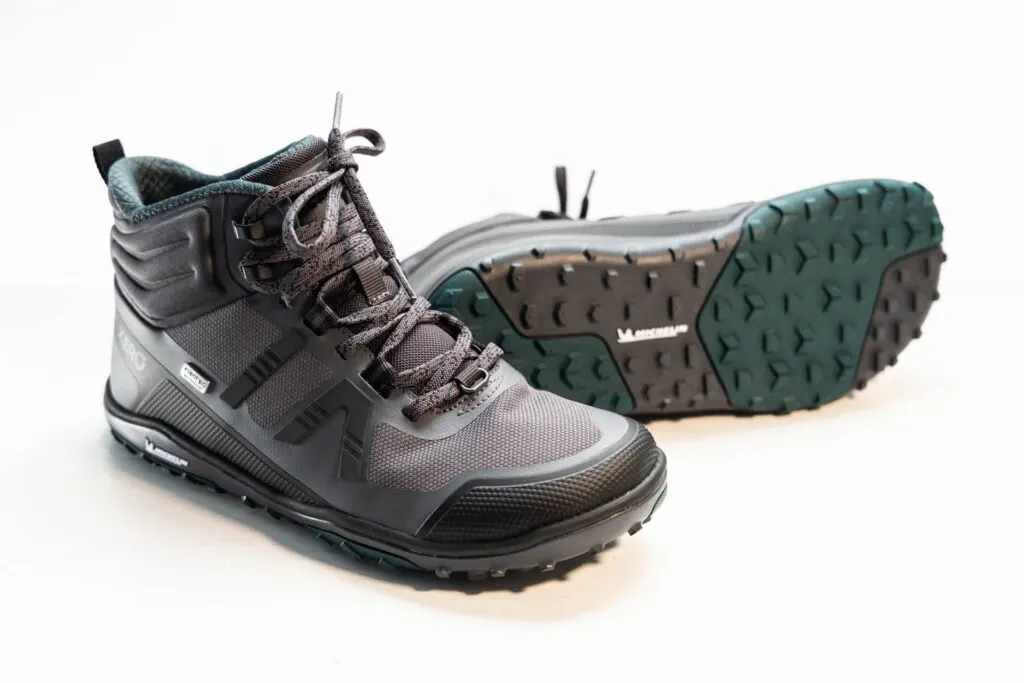
How long have you been into barefoot shoes?
I am pro-barefoot, but I wouldn’t say I’m the one running 100 mile Ultra races in the mountains in my bare feet. I’m also not that guy at your local 5K that is LITERALLY running the road race in his bare feet.(C’mon man, that’s just weird.) 😂 However, I understand the benefits and am determined to improve my foot strength daily. My goal is to be able to run a half marathon in barefoot shoes. I can currently run a 10K, so I’ve made great progress in the last 18 months of committing to a fully minimalist, barefoot lifestyle! Since I joined Xero Shoes in October of 2022, I have transitioned to only run and train in barefoot shoes. I have enjoyed the journey and have seen great results. It has been so interesting to see that with strong feet, I can literally spend all day on my feet walking a trade show and my feet still feel fantastic by the end. So yes, I’m hooked on the barefoot Kool-Aid because it’s working well for me.
What has your personal transition journey been like?
I started by only wearing barefoot shoes casually. Xero Shoes has many styles of nice looking casual shoes. Some canvas, some knit upper shoes that many of our customers really like (called Dillons). Those are either named after our awesome photographer named Dillon or the Colorado lake that’s up the road an hour or so (also called Dillon). I introduced running in barefoot shoes slowly. I started doing small distances at a time on the treadmill using my Xero HFS II. I couldn’t run for more than 5 or 10 minutes in barefoot shoes at first. But by sticking with it, and going slow, I was able to steadily increase my distance. My feet love the wide toebox and the lightweight, flexible nature of the shoes. Years ago I struggled a lot with IT band syndrome. I’m not going to make claims that our shoes fix those things, but it might be a nice coincidence that I don’t seem to have that issue anymore lately. There are lots of published research papers that show how barefoot shoes cue the body to move more efficiently with reduced impact to the joints, so that might have something to do with it too.
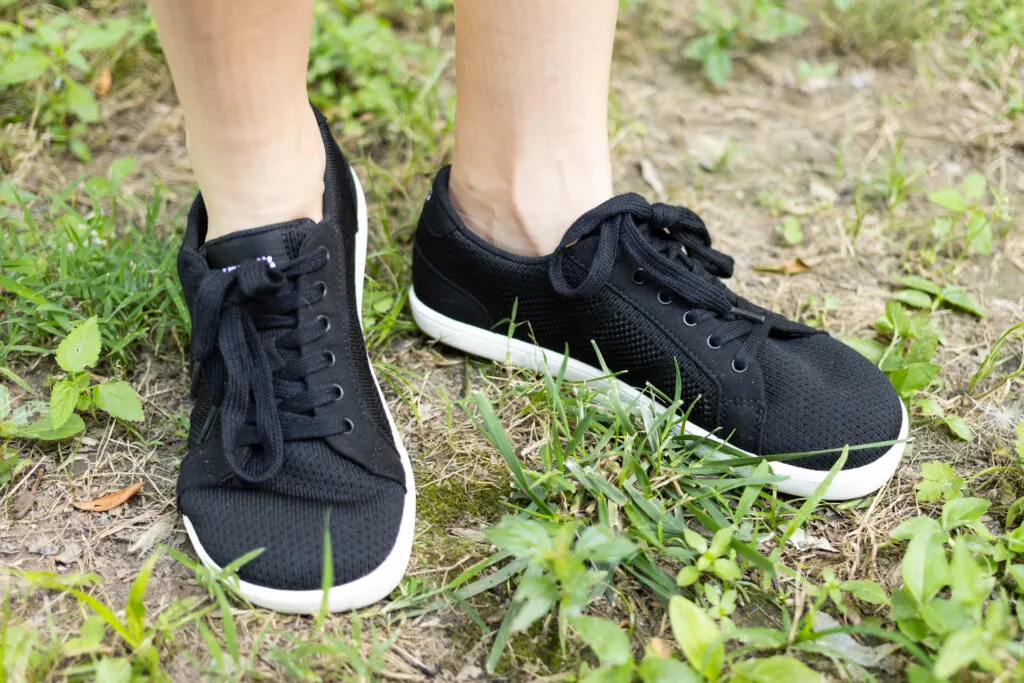
What’s the number one thing you see people doing wrong when it comes to transitioning to barefoot shoes?
We live in a microwave oven society with no patience for long-term gratification. But this kind of transition from overly-structured, stiff and inflexible shoes requires consistency and patience! People tend to try to do too much too fast. The workload outpaces the recovery and they end up injuring themselves. Another mistake is they set a goal of running a specific race in the barefoot shoes, and because the race day is fixed, they lose the ability to adjust their training up or down based on how their body is reacting. Most training programs are very rigid in how steady they increase mileage week after week. But if your body just isn’t recovering well enough, you need to take the time your body needs to do it right. That may cause you to miss that calendar date of your race, but it’s better to listen to your body and adjust accordingly than force the issue and end up injuring yourself.
So how should folks transition to barefoot shoes safely and effectively? Lay out a step-by-step plan!
Start by wearing the shoes casually. You can do foot strengthening exercises with your feet like picking up a dish towel with your toes, or spelling the alphabet with a pointed foot. Allow yourself to spend more time around the house or your immediate neighborhood completely barefoot! Be bold and walk on roads, rocks, curbs, gravel, grass or weeds. That’s how our ancestors did it for millions of years, so you’ve got it in your blood, you just gotta trust your genetic ability to have strong feet if you make it a priority.
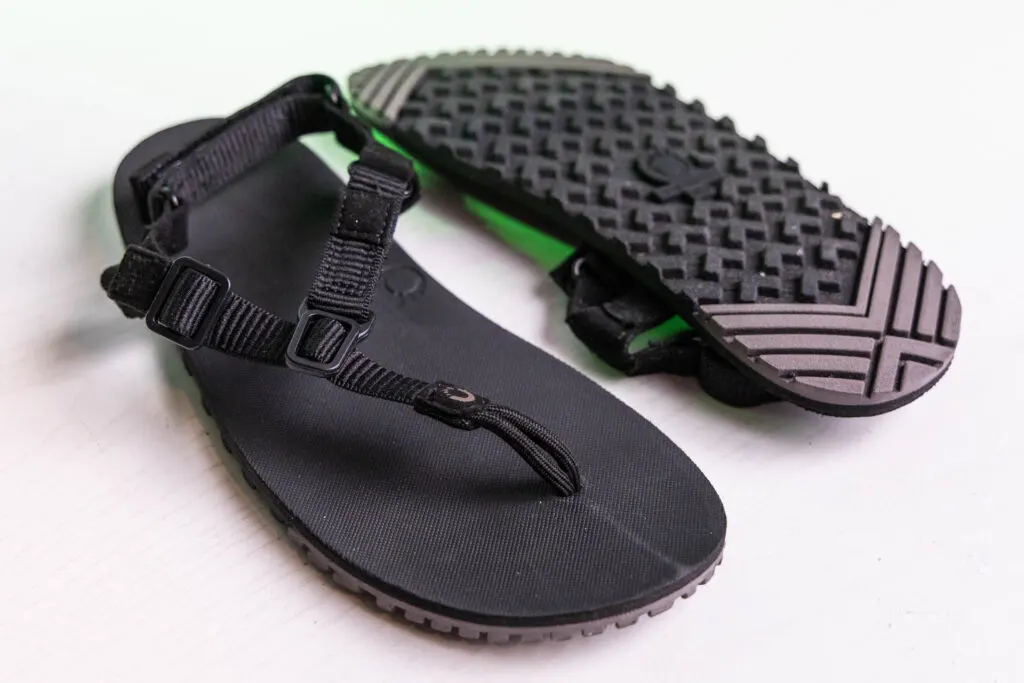
Slowly incorporate wearing your barefoot shoes in your exercise routines (hiking, or trail running). Once you start using them for hikes or trail runs, keep the mileage very short at first. Ramp up your mileage very slowly–and listen to your body. If you’re not recovering, back it off and reduce the workload and increase the recovery time. If you’re feeling good, go ahead and ramp it up a bit. You’ll find that progress isn’t always linear either! You may struggle for 6 weeks and then feel like superman (or wonderwoman) weeks 7-12.
Make sure you’re doing foot strengthening exercises as cross-training for your hiking/running/trail running. Muscle imbalances caused by ONLY running can also sideline progress. Trail running on uneven terrain is great for avoiding overuse injuries, but also try to do something besides running once in a while. Pickleball, anyone?
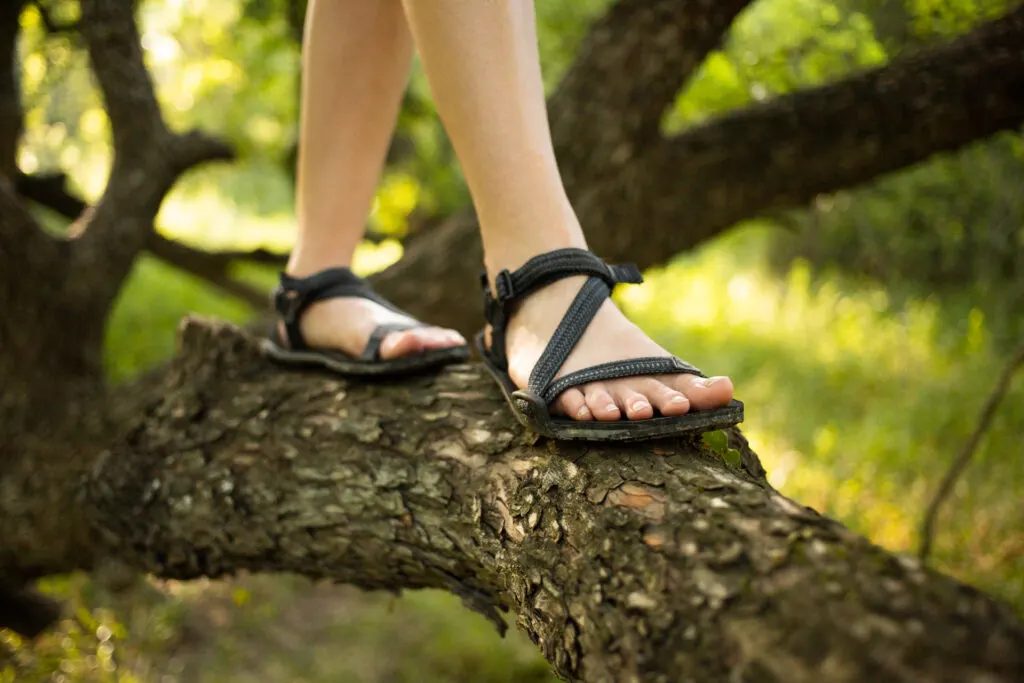
How long does it take to adjust to barefoot shoes? What should folks expect (or not expect)?
How long do you want the benefits of strong feet to last? Are you willing to consistently work on this and commit to it indefinitely? Anything worthy of achieving takes work. Most people start seeing great gains in foot strength within a few weeks to a few months. But remember, the benefits can last a lifetime, so don’t overdo it because you want fast results. Keep the training consistent and give yourself some grace and patience in transitioning. Remember you’ve been wearing the same kind of over-structured, highly cushioned shoes for your entire life, so keep those expectations in check when trying to completely re-train those foot/brain neural connections and build up strength bit by bit.
What’s the number one underrated or overlooked tip to get used to barefoot shoes in your opinion?
The number one best thing you can do is to kick your shoes off and actually walk around in your bare feet in your house, at a park, walking around the block, etc. Remember when you were a kid, your feet were bomb proof! You could have run on top of gravel no problem! As we get older, we get more wimpy! Our body’s capability hasn’t changed but our willingness to make ourselves temporarily uncomfortable has for some reason skyrocketed! Trust your body and have fun experimenting!
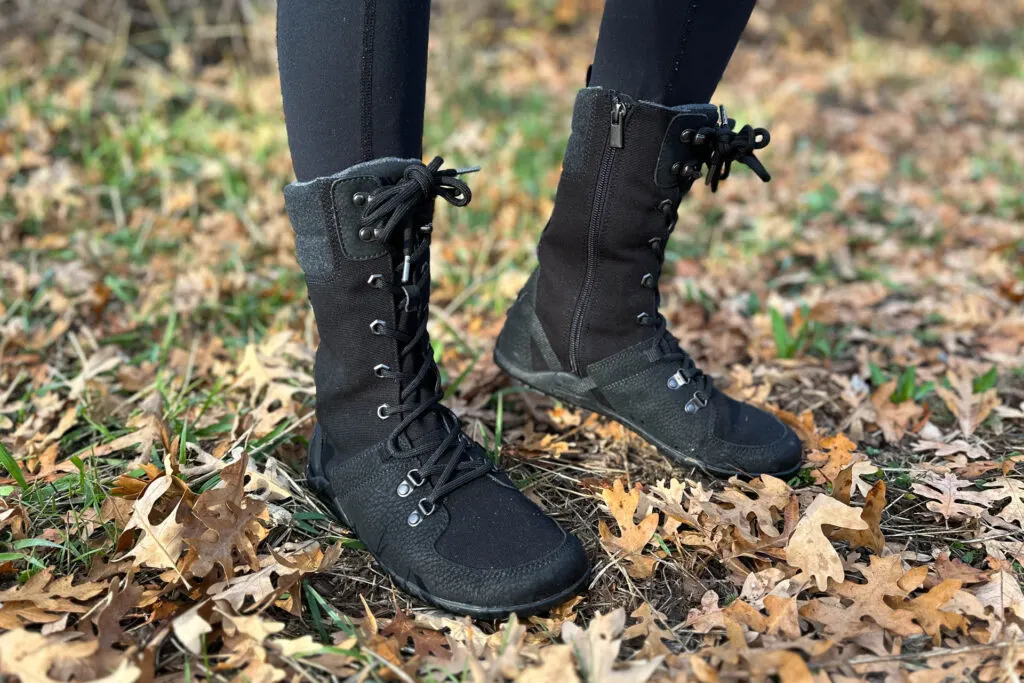
Why go through all this to switch? What are the benefits?
A.) Better posture. B). Improved body awareness/proprioception. C). better balance. D). Improved strength and endurance. E). We legally cannot claim that minimal shoes will reduce risk of injury, so I DEFINITELY won’t be claiming that! Many of our customers share with us their experiences with injury reduction, but there’s a chance that all could just be coincidences. Thousands of coincidences…
Where can folks go to find their first pair of barefoot shoes and what should they look for in an ideal pair?
Xeroshoes.com! Come check us out. Our customer service team is great, and can help with product suggestions or recommendations if needed. We have so many styles for so many wearing occasions! Also, our prices are affordable for a high quality shoe. Give us a chance and give your feet a chance to be healthy and strong! You won’t regret it.
Looking for more info on transitioning? Check out our friend Anya’s article on what barefoot shoes are and how they can help.
Barefoot Shoes for Natural, Healthy Feet and Body
Getting your heel level with your forefoot (as is the case with minimalist and zero-drop shoes) makes for a more natural posture, which may help reduce back, knee, and hip pain.
Minimalist shoes also promote better balance and stability.
They can also help prevent plantar fasciitis, bunions, neuromas, and hammer toes; all issues that come up with a traditional, traditionally constructed shoe.
With a minimal shoe, your foot has to work more, but that’s a good thing. Think of it like going to the gym. You work out other parts of your body, why not your feet? Wear shoes that promote foot health so you can continue to enjoy hiking and trail running for years without being sidelined by injuries that stem from weak feet.
Foot Strengthening Exercises to Aid in Transitioning to Barefoot Shoes
- Dish Towel Party Trick: Get a dish towel from the kitchen and put it on the ground and try grabbing the dish towel with your toes and then let go and then grab it with your toes and then let go. That does wonders for the underside of your foot: the plantar fascia muscle.
- Roll it out: Roll your foot on a golf ball to get that blood flow going to the underside of your foot. Press down on one zone of your sole at a time to help release tense and tired muscles.
- Stretch: Do toe strengthening exercises like a calf raise, but press those toes against the ground to get them to really work.
- Spell the alphabet: Spell the alphabet in the air with one bare foot at a time while standing on one leg.
- Jump: Kick off your shoes and jump rope. Or make a line on the ground and practice jumping across it from side to side. It really strengthens your ankles and feet muscles, which will help a lot in your trail running and running.
- Ankle squats: Do squats with your foot at a 45 degree angle (achieved via propping your forefoot on a block or ramp). That’ll apply a little bit different load to the ankle and help strengthen it.
- Wear toe spacers: To encourage your toes spread naturally, wear toe spacers (like braces for you’re feet). They also open up all of those capillaries and veins to promote good circulation.
- Massage your feet: Give your bare feet a massage with your hands or a golf ball.
- Spread your toes: Put your fingers between your toes (one between each toe) and move your ankle around to stretch it out.
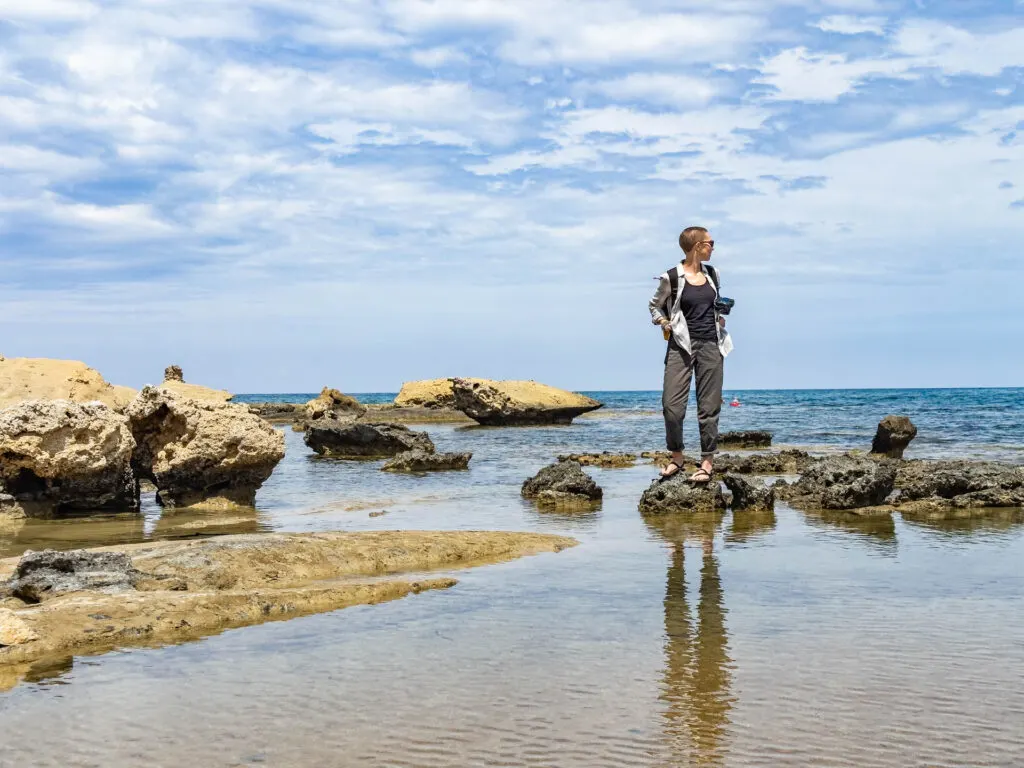
Bottom Line: Is Transitioning to Barefoot Shoes Worth It?
Ultimately, when you successfully transition to barefoot shoes, you’ll find plenty of long term benefits, from better foot health, better balance and stability (super helpful when hiking or running on uneven trails) and more functional movement all the way up your spine. Plus, who doesn’t love the childlike joy of feeling the ground beneath your feet?! I transitioned years ago and never regret it!
So shod your feet in minimalist footwear, transition wisely, and then get outside and wander on!
Looking for more barefoot shoe content? Check out our favorite barefoot shoes for every season and our favorite barefoot hiking sandals!
